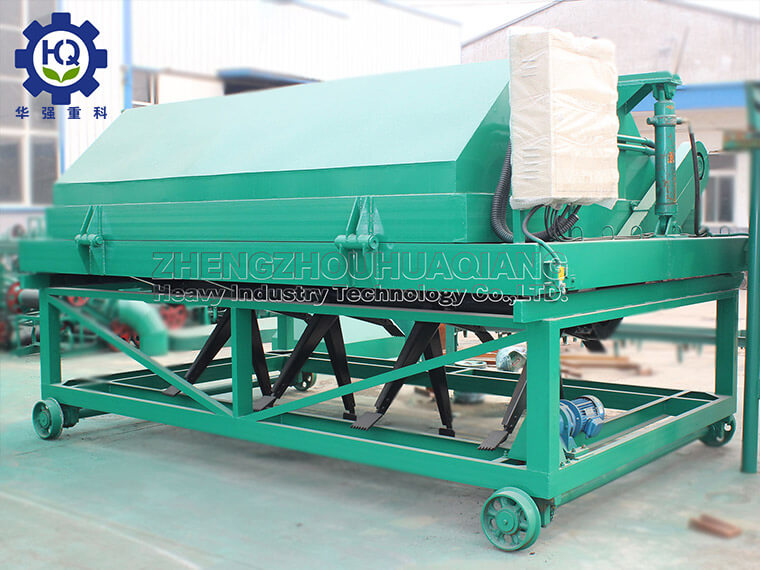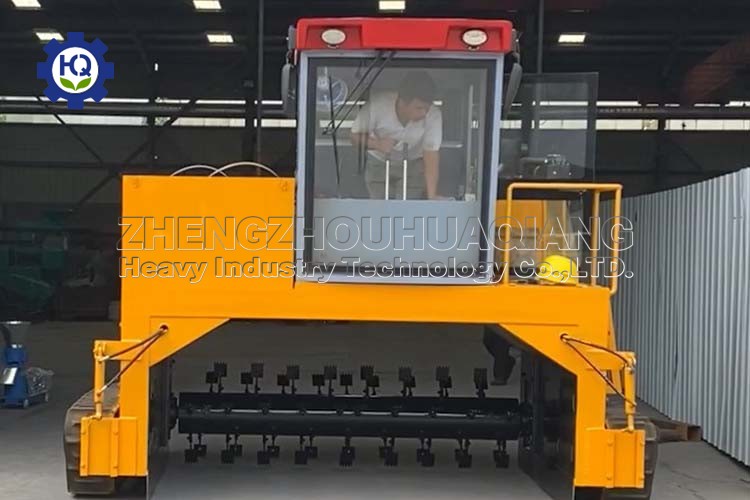The chicken manure fermentation tank type tipping machine is an efficient mechanical equipment specifically used for the fermentation treatment of livestock and poultry manure, especially chicken manure. The following is a detailed introduction about the device:
The chicken manure fermentation tank type tipping machine is a modern agricultural machinery equipment mainly used for the fermentation treatment of livestock and poultry manure. By operating the tipping machine, it is possible to achieve uniform flipping, mixing, and ventilation of chicken manure, thereby accelerating the fermentation process of chicken manure and improving the yield and quality of organic fertilizers.
Working principle: The working principle of the slot type tipping machine is mainly to achieve the flipping of compost through the movement and flipping of the tipping shovel device. When the tipping shovel device moves upwards, it will flip the compost up, and when it moves downwards, it will flatten the compost. At the same time, the function of the baffle and skateboard is to control the movement and position of the compost, so that it will not scatter during the flipping process. The stacker needs to be flipped in a certain order to ensure that the compost can be fully mixed and fermented.
Technical features:
Efficiency: The slot type tipping machine can quickly and evenly flip and mix chicken manure, greatly accelerating the fermentation speed and increasing the yield of organic fertilizers.
High degree of automation: The equipment adopts advanced control systems, which can achieve automated operations, reduce manual intervention, and reduce labor intensity.
Strong adaptability: The stacker is suitable for breeding farms and fermentation tanks of different scales, and can be customized and adjusted according to actual needs.
Environmental protection and energy conservation: By operating the tipping machine, the accumulation and pollution of chicken manure can be reduced, while promoting the recycling of organic matter, which meets environmental protection requirements.
main parameter
Production capacity: According to different models and specifications, the output can be adjusted within a certain range to meet the needs of different scale aquaculture farms.
Power: Depending on the size and performance requirements of the equipment, the motor power also varies, generally ranging from several thousand watts to tens of kilowatts.
Flipping width: The equipment’s flipping width is usually between 2 meters and 5 meters, and can be adjusted according to the actual width of the compost.
usage method
Preparation stage: Mix chicken manure and other auxiliary materials in proportion and lay them in the fermentation tank.
Start the equipment: Start the stacker and perform the stacker operation according to the set parameters and sequence.
Monitoring and adjustment: During the flipping process, close attention should be paid to the operating status of the equipment and the fermentation situation of the compost, and adjustments and optimizations should be made as needed.
End operation: After the chicken manure is fully fermented and meets the predetermined requirements, stop the operation of the turner and prepare for the next batch of fermentation treatment.
The chicken manure fermentation tank type tipping machine is an efficient and environmentally friendly agricultural machinery and equipment, with broad application prospects in the field of livestock and poultry manure treatment. By using this device, rapid and uniform fermentation treatment of chicken manure can be achieved, improving the yield and quality of organic fertilizers, while reducing environmental pollution and resource waste.


.jpg)


.jpg)

.jpg)
.jpg)